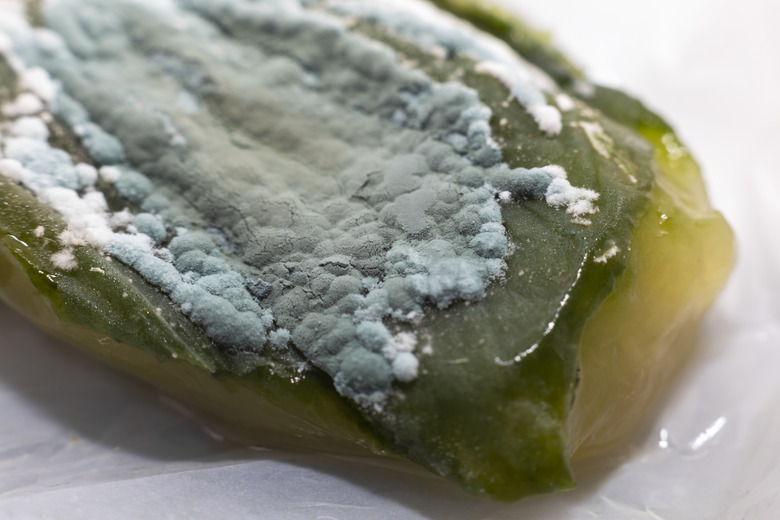How Do Mold Spores Differ From Bacterial Endospores?
Cell Types
Cell Types
Perhaps the most important way that mold spores differ from bacterial endospores is that molds are classified as so-called higher fungi. As such they feature what biologists term the eukaryotic cell type. Bacterial endospores on the other hand form from bacteria which are—as a group—classified as having the prokaryotic cell type. The difference between the prokaryotic cell and the eukaryotic cell is a fundamental one in biology. In the plainest terms, the bacterial cell is structurally a much simpler one.
Mold Spores
Mold Spores
The eukaryotic cell—as those in mold spores—is replete with a complex of cellular structures called organelles. Organelles carry out all manner of cell functions and one of the most conspicuous organelles is the nucleus. The eukaryotic cell nucleus of mold spores contains the DNA that allows the cell to function and reproduce. This is in contrast to bacterial endospores in which the DNA is more or less free in the cell's cytoplasm.
Besides the nucleus, the eukaryotic mold spore cell contains such organelles as the endoplasmic reticulum or ER. The ER is essentially like a maze of folded membranes in which many biochemical processes vital to the cell are carried out. In mold spores the ER is connected to the nuclear envelop, a membrane that surrounds the cell nucleus. In bacterial endospores this arrangement is lacking.
Bacterial Endospores
Bacterial Endospores
Bacterial endospores feature virtually none of the level of cellular sophistication present in eukaryotic mold spores. Another distinction between bacterial endospores and mold spores—besides their fundamental cell type difference—is the role they play in their respective organisms' life histories. A bacterial endospore is a resistant structure that forms within the cell of a bacterium. Unlike mold spores, the bacterial endospore is specially adapted to resist adverse environmental conditions. A key feature of bacterial endospores is a compound called dipicolinic acid. This compound, though not prevalent in mold spores, is instrumental in mediating the bacterial endospores' resistance to adverse environmental conditions.
Other Differences
Other Differences
There are numerous other differences between bacterial endospores and mold spores. Most of them have, again, to do with the fundamental distinction between the eukaryotic and the prokaryotic cell. Many other organelles besides those already described are present in the mold spore but absent in the bacterial endospore. These include a structure called the Golgi apparatus and others like the so-called nucleolus. The nucleolus is a structure within the eukaryotic cells' nucleus and is active in protein synthesis critical to cell function. Bacterial endospores carry out many of the same essential life functions as mold spores but they do so without the benefits of sophisticated organelles featured in the mold spore.
References
- Microbiology, Fourth Edition; Philip L. Carpenter; 1977
Cite This Article
MLA
Miller, Donald. "How Do Mold Spores Differ From Bacterial Endospores?" sciencing.com, https://www.sciencing.com/do-spores-differ-bacterial-endospores-5255101/. 2 August 2009.
APA
Miller, Donald. (2009, August 2). How Do Mold Spores Differ From Bacterial Endospores?. sciencing.com. Retrieved from https://www.sciencing.com/do-spores-differ-bacterial-endospores-5255101/
Chicago
Miller, Donald. How Do Mold Spores Differ From Bacterial Endospores? last modified March 24, 2022. https://www.sciencing.com/do-spores-differ-bacterial-endospores-5255101/
